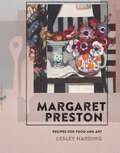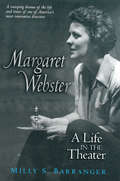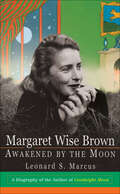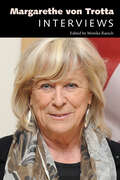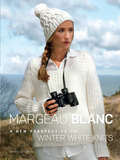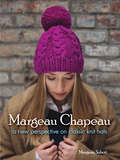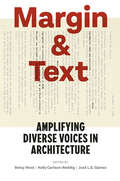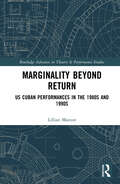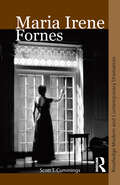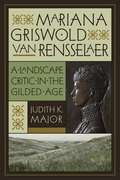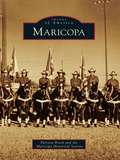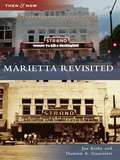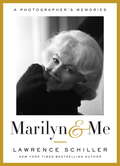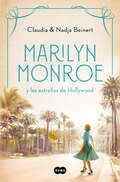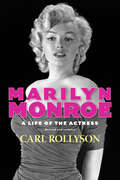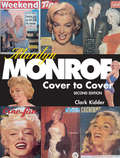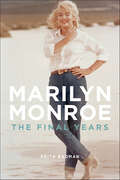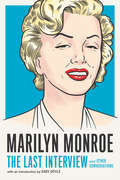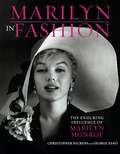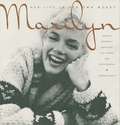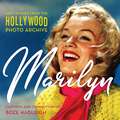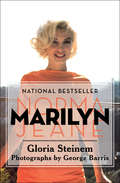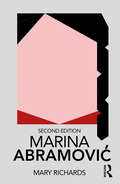- Table View
- List View
Margaret Preston: Recipes for Food and Art
by Lesley HardingCelebrated for her vibrant and distinctive pictures of indigenous flowers, artist Margaret Preston was an equally colourful and outspoken personality. Less well known is her legacy as a generous and insightful teacher and keen cook, and her deep sense of civic duty. She was passionate about the need for a modern national culture that reflected everyday life. For Preston, the building blocks of such a culture were not to be found in the Australian pastoral landscape tradition, but in the home and garden. Maintaining that art should be within everyone's reach, she published widely on the methods and techniques of a host of creative pursuits—from pottery, printmaking and basket weaving, to the gentle art of flower arranging. She devoted much of her career to the genre of still life, depicting humble domestic objects and flowers from her garden, and often painting in the kitchen while keeping 'one eye on the stew'. Drawing on recipes from handwritten books found in the National Gallery of Australia and richly illustrated with Preston's paintings, prints and photographs this book sheds new light on the fascinating private life of a much-loved Australian artist.
Margaret Webster: A Life in the Theater
by Milly S. BarrangerMargaret Webster: A Life in the Theater is an engrossing backstage account of the life of pioneering director Margaret Webster (1905-72). This is the first book-length biography of Webster, a groundbreaking stage and opera director whose career challenged not only stage tradition but also mainstream attitudes toward professional women. Often credited with first having brought Shakespeare to Broadway, and renowned for her bold casting of an African American (Paul Robeson) in the role of Othello, Webster was a creative force in modern American and British theater. Her story reveals the independent-minded artist undeterred by stage tradition and unmindful of rules about a woman's place in the professional theater. In addition to providing fascinating glimpses into Webster's personal and family life, Margaret Webster: A Life in the Theater also offers a who's-who list of the biggest names in New York and London theater of the time, as well as Hollywood: John Gielgud, Noël Coward, George Bernard Shaw, Uta Hagen, Sybil Thorndike, Eva LeGallienne, and John Barrymore, among others, all of whom crossed paths with Webster. Capping Webster's amazing story is her investigation by Senator Joseph McCarthy and HUAC, which left her unable to work for a year, and from which she never fully recovered.
Margaret Wise Brown: Awakened By The Moon
by Leonard S. Marcus"Leonard S. Marcus... has masterfully written about a fascinating woman who in her short life changed literature for the very young. I was throroughly enchanted."--Eric CarleNearly fifty years after her sudden death at the age of forty-two, Margaret Wise Brown remains a legend and an enigma. Author of Goodnight Moon, The Runaway Bunny, and dozens of other children's classics, Brown all but invented the picture book as we know it today. Combining poetic instinct with a profound empathy for small children, she understood a child's need for security, love, and a sense of being at home in the world. Yet, these were comforts that had eluded her. Her sparkling presence and her unparalleled success as a legendary children's book author masked an insecurity that left her restless and vulnerable.In this authoritative and moving biography, Leonard S. Marcus, who had access to never-before-published letters and family papers, portrays Brown's complex character and her tragic, seesaw life. Colorful, thoughtful, and insightful, Margaret Wise Brown is both a portrayal of a woman whose stories still speak to millions and a portrait of New York in the 1930s and 1940s, when the literary world blossomed and made history.
Margarethe von Trotta: Interviews (Conversations with Filmmakers Series)
by Monika RaeschMargarethe von Trotta (b. 1942) entered the film industry in the only way she could in the 1960s—as an actress. Throughout her career, von Trotta added thirty-two acting credits to her name; however, these credits came to a halt in 1975. Her ambition had always been to be a movie director. Though she viewed acting as a detour, it allowed her to be in the right place at the right time, and through her line of work she met such important directors as Rainer Werner Fassbinder and Volker Schlöndorff. The latter would eventually provide her with the opportunity to codirect her first film, Die Verlohrene Ehre der Katharina Blum (The Lost Honor of Katharina Blum) in 1975. The debut's success ensured von Trotta's future in the film industry and launched her accomplished film directing career. In Margarethe von Trotta: Interviews, volume editor Monika Raesch furnishes twenty illuminating interviews with the auteur. Spanning three decades, from the mid-1980s until today, the interviews reveal not only von Trotta's life in the film industry, but also evolving roles of and opportunities provided to women over that time period. This collection of interviews presents the different dimensions of von Trotta through the lenses of film critics, scholars, and journalists. The volume offers essential reading for anyone seeking a better understanding of an iconic female movie director at a time when this possibility for women just emerged.
Margeau Blanc: A New Perspective on Winter White Knits
by Margeau SobotiElegant in their simplicity, these 13 gorgeous knitwear items for autumn and winter combine plain silhouettes with a chic and sophisticated appeal. Margeau Soboti, a former Vogue Knitting editor, presents clear instructions, diagrams, and color photos for seven sweaters and six accessories. Most of the patterns are sufficiently easy for novices but interesting enough for experienced knitters.Among the easy-to-knit items are a fur bomber hat with earflaps, a square shawl with tassels, a broken rib beanie, and a fringed wrap in triangle knit-and-purl pattern. Other simple patterns include loose- and standard-fitting crewneck pullovers, a raglan-sleeve fisherman's sweater, and drop-shoulder pullovers. More challenging patterns include a cabled beanie, an oversized crewneck pullover, and a V-neck cardigan. Yarns range in color from white and snowdrift to ivory and ecru and in weight from DK to bulky, offering an exciting variety of shades and textures.
Margeau Chapeau: A New Perspective on Classic Knit Hats (Dover Knitting, Crochet, Tatting, Lace)
by Margeau SobotiLet Margeau show you how to knit the hat of your dreams, from a stylish tweed cap to a playful beanie or a classic beret. Fifteen patterns, all well within the capacity of novice knitters, include earflap caps, a turban headband, watch caps, and other items. The designs offer a variety of attractive silhouettes and shapes, from fitted, traditional items to slouchy, trendy hats. Suggested yarns range from affordable to luxury, all chosen for their softness and sophisticated color palette.Margeau Soboti is a hand knit and machine knit designer with a BBA in Design and Management from Parsons, The New School for Design. A former editor at Vogue Knitting magazine, her designs have appeared in that publication as well as in Knit Simple and Noro magazines. She has also worked as a sample knitter for fashion-forward knitwear designers, including Wool and the Gang. More of her work can be found at www.margeausoboti.com.
Margin and Text: Amplifying Diverse Voices in Architecture
by Betsy West, Kelly Carlson-Reddig and José L.S. GámezA broad range of diverse voices in architecture discuss issues of equity, access, and social justice embedded in and related to the built environment.Margin and Text is a collection of essays, interviews, and personal stories, as well as historical and current writings and lectures, contributed by BIPOC and female practitioners and educators in architecture. Each piece offers reflections on architecture’s troubled past, commentary on its fluid present, and visions of possible futures, all set amid today’s context of broad social activism, divisive politics, and the devastating toll of the COVID-19 pandemic.Edited by architecture educators Betsy West, Kelly Carlson-Reddig, and José L.S. Gámez, Margin and Text draws together contributors who are widely diverse in gender, ethnicity, age, religion, culture, point of view, and the nature of their work. Each chapter features an introduction by one of the editors, followed by essays from names in the field that include:Meejin Yoon (Höweler+Yoon) on the multicultural aspirations of architectureChris Cornelius (University of New Mexico) on indigenous place and spaceJack Travis (Jack Travis Architect) on a Black aestheticAneesha Dharwadker (University of Illinois) on America's architectural diaspora Teddy Cruz and Fonna Forman (Estudio Teddy Cruz+Fonna Forman) on the Mexico borderAnd more Accessible, compelling, and thought-provoking, these pieces are combined with personal snapshots, individual projects, and an overview of benchmark events such as Whitney M. Young’s historic 1968 keynote address at the AIA National Convention, the Pritzker Prize petition for Denise Scott Brown, the Alcatraz Proclamation of 1969, and the #NotMyAIA response to AIA’s pledge to work with Donald Trump following the 2016 election.Richly illustrated with more than 100 photographs throughout, this timely volume offers unique perspectives on systemic racism in the architecture and design space, making it an invaluable resource for architecture students, academics, and professionals.
Marginal Narratives and the Question of Human Rights in Asian Pacific Literature
by Sk Sagir Ali Avijit BasakThis book represents a significant intervention in human rights and its literary praxis, underscoring its paramount relevance and pressing urgency within the intricate tapestry of the Asian Pacific context. The book examines the local trauma endured within the complex geopolitical landscape of the Asian continent while also embracing a broader outlook that transcends geosocial boundaries. As a pivotal contribution to the discourse on Asian trauma studies, the chapters address a critical scholarly lacuna by delving into critical theoretical reflections and providing a robust epistemological foundation. The chapters look at human rights and trauma studies in a way that focuses not only on Europe. The volume fosters a deep comprehension of the historical and cultural facets shaping the Asian continent and its human rights challenges. The book is indispensable for educators, policymakers, and researchers engaged in the intricate realm of human rights and trauma studies.
Marginality Beyond Return: US Cuban Performances in the 1980s and 1990s (Routledge Advances in Theatre & Performance Studies)
by Lillian ManzorThis study is an exploration of US Cuban theatrical performances written and staged primarily between 1980 and 2000. Lillian Manzor analyzes early plays by Magali Alabau, Jorge Ignacio Cortiñas, María Irene Fornés, Eduardo Machado, Manuel Martín Jr., and Carmelita Tropicana as well as these playwrights’ participation in three foundational Latine theater projects --INTAR’s Hispanic Playwrights-in-Residence Laboratory in New York (1980-1991), Hispanic Playwrights Project at South Coast Repertory Theater in Costa Mesa, CA (1986-2004), and The Latino Theater Initiative at Center Theater Group's Mark Taper Forum in Los Angeles (1992-2005). She also studies theatrical projects of reconciliation among Cubans on and off the island in the early 2000s. Demonstrating the foundational nature of these artists and projects, the book argues that US Cuban theater problematizes both the exile and Cuban-American paradigms. By investigating US Cuban theater, the author theorizes via performance, ways in which we can intervene in and reformulate political and representational positionings within the context of hybrid cultural identities. This book will of great interest to students and scholars in Performance Studies, Transnational Latine Studies, Race and Gender studies.
Maria Irene Fornes (Routledge Modern and Contemporary Dramatists)
by Scott T. CummingsMaria Irene Fornes is the most influential female American dramatist of the 20th century. That is the argument of this important new study, the first to assess Fornes's complete body of work. Scott T. Cummings considers comic sketches, opera libretti and unpublished pieces, as well as her best-known plays, in order to trace the evolution of her dramaturgy from the whimsical Off-Off Broadway plays of the 1960s to the sober, meditative work of the 1990s. The book also reflects on her practice as an inspirational teacher of playwriting and the primary director of her own plays. Drawing on the latest scholarship and his own personal research and interviews with Fornes over two decades, Cummings examines Fornes's unique significance and outlines strategies for understanding her fragmentary, enigmatic, highly demanding theater.
Mariana Griswold Van Rensselaer
by Judith K. MajorMariana Griswold Van Rensselaer (1851-1934) was one of the premier figures in landscape writing and design at the turn of the twentieth century, a moment when the amateur pursuit of gardening and the increasingly professionalized landscape design field were beginning to diverge. This intellectual biography--the first in-depth study of the versatile critic and author--reveals Van Rensselaer's vital role in this moment in the history of landscape architecture. Van Rensselaer was one of the new breed of American art and architecture critics, closely examining the nature of her profession and bringing a disciplined scholarship to the craft. She considered herself a professional, leading the effort among women in the Gilded Age to claim the titles of artist, architect, critic, historian, and journalist. Thanks to the resources of her wealthy mercantile family, she had been given a sophisticated European education almost unheard of for a woman of her time. Her close relationship with Frederick Law Olmsted influenced her ideas on landscape gardening, and her interest in botany and geology shaped the ideas upon which her philosophy and art criticism were based. She also studied the works of Charles Darwin, Alexander von Humboldt, Henry David Thoreau, and many other nineteenth-century scientists and nature writers, which influenced her general belief in the relationship between science and the imagination.Her cosmopolitan education and elevated social status gave her, much like her contemporary Edith Wharton, access to the homes and gardens of the upper classes. This allowed her to mingle with authors, artists, and affluent patrons of the arts and enabled her to write with familiarity about architecture and landscape design. Identifying over 330 previously unattributed editorials and unsigned articles authored by Van Rensselaer in the influential journal Garden and Forest--for which she was the sole female editorial voice--Judith Major offers insight into her ideas about the importance of botanical nomenclature, the similarities between landscape gardening and idealist painting, design in nature, and many other significant topics. Major's critical examination of Van Rensselaer's life and writings--which also includes selections from her correspondence--details not only her influential role in the creation of landscape architecture as a discipline but also her contribution to a broader public understanding of the arts in America.
Maricopa
by Patricia Brock Maricopa Historical SocietyThe Hohokam built an extensive network of canals with sticks and stone hoes, but mysteriously disappeared in 1450. Later, the Pima and Maricopa Indians occupied their farmlands near the Gila River, and Maricopa took on the name of the latter. In 1858, Maricopa became an isolated little town in the middle of the desert. It served as the major stage station for the Butterfield Overland Stage Station and became a beacon of light for trappers, traders, and immigrants brave enough to travel its unknown land. Maricopa moved south in 1879 to latch onto the newly built Southern Pacific Railroad and became Arizona's freighting distribution center. A second move took it 4 miles east to better align with Tempe. Thus began Maricopa's life as an important railroad junction, playing host to two presidents, 1911 flying machines, honeymoon couples, actors, and a nest of wildcats to entertain the hundreds of passengers who waited for their connections to Phoenix or east-west. In the early 2000s, Maricopa grew from a small farming community to a city, earning it the title of one of the fastest growing cities in the nation. Today its population continues to grow with more than 40,000 inhabitants from all over the United States and world.
Marietta Revisited (Then and Now)
by Damien A. Guarnieri Joe KirbyMarietta is one of the largest and most historic cities in northwest Georgia. Some of that history has been preserved, but much of it, unfortunately, has been lost to "progress," as the photographs in Then and Now: Marietta Revisited attest.
Marilyn & Me
by Lawrence SchillerAn intimate memoir recalling a young photographer's relationship with Marilyn Monroe just months before her death, with extraordinary photographs, some of which have never been published."With the precision of a surgeon, Schiller slices through the façade of Marilyn Monroe in his unflinching memoir. Revealing and readable, it's a book I couldn't put down." --Tina BrownWhen he pulled his station wagon into the 20th Century-Fox studios parking lot in Los Angeles in 1960, twenty-three-year-old Lawrence Schiller kept telling himself that this was just another assignment, just another pretty girl. But the assignment and the girl were anything but ordinary. Schiller was a photographer for Look magazine and his subject was Marilyn Monroe, America's sweetheart and sex symbol. In this intimate memoir, Schiller recalls the friendship that developed between him and Monroe while he photographed her in Hollywood in 1960 and 1962 on the sets of Let's Make Love and the unfinished feature Something's Got to Give, the last film she worked on. Schiller recalls Marilyn as tough and determined, enormously insecure as an actress but totally self-assured as a photographer's model. Monroe knew how to use her looks and sexuality to generate publicity, and in 1962 she allowed Schiller to publish the first nude photographs of her in over ten years, which she then used as a weapon against a studio that wanted to have her fired--and ultimately succeeded. The Marilyn Schiller knew and writes about was adept at hiding deep psychological scars, but she was also warm and open, candid and disarming, a movie star who wished to be taken more seriously than she was. Accompanying the text are eighteen of the author's own photographs, some never previously published. Many writers have tried to capture her essence on the page, but as someone who was in the room, a young man Marilyn could connect with and trust, Schiller gives us a unique look at the real woman offscreen."In this short, splendid memoir, Lawrence Schiller offers us another cut on the scintillating diamond that is Marilyn Monroe. In clear honest straightforward prose, Schiller allows us to dwell in the heart of another time. He captures Marilyn, both in photographs and words, and in so doing he gives us intimate access into one of the great stories of the 20th century: the complicated cocktail of joy and sadness that goes along with both beauty and fame." --Colum McCannFrom the Hardcover edition.
Marilyn Monroe y las estrellas de Hollywood
by Nadja Beinert, Claudia BeinertLLEGA A ESPAÑA UNA COLECCIÓN BEST SELLER CON NOMBRE DE MUJER Marilyn Monroe, Audrey Hepburn y Marlene Dietrich dan salida a esta serie de biografías noveladas sobre grandes personajes de la cultura universal.Descubre las vidas de novela que han inspirado a millones de mujeres de la mano de Suma de Letras. En ocasiones, las estrellas nacen. Pero también hay que crearlas. Los Ángeles, 1942. Norma Jeane Baker vive una niñez solitaria y se refugia en el cine. Aunque un matrimonio pactado la obliga a abandonar su sueño de convertirse en una estrella, cuando un fotógrafo intenta hacer de ella una modelo famosa Norma cobra vida frente a la cámara y deja atrás todas sus inseguridades. No tarda en darse cuenta de que su lugar está bajo los focos; que solo bajo su luz puede ser feliz. Pero, para lograrlo, primero deberá liberarse de las reglas puritanas de la época para deshacerse de Norma Jeane y convertirse en una mujer única cuyo nombre brillará en el firmamento durante generaciones: Marilyn Monroe. «Nunca he engañado a nadie. He permitido que la gente se engañara a sí misma. No se molestaron en averiguar quién ni qué era yo en realidad».MARILYN MONROE
Marilyn Monroe: A Life of the Actress, Revised and Updated (Hollywood Legends Series)
by Carl RollysonIn American popular culture, Marilyn Monroe(1926–1962) has evolved in stature from movie superstar to American icon. Monroe's own understanding of her place in the American imagination and her effort to perfect her talent as an actress are explored with great sensitivity in Carl Rollyson's engaging narrative. He shows how movies became crucial events in the shaping of Monroe's identity. He regards her enduring gifts as a creative artist, discussing how her smaller roles in The Asphalt Jungle and All About Eve established the context for her career, while in-depth chapters on her more important roles in Bus Stop, Some Like It Hot, and The Misfits provide the centerpiece of his examination of her life and career. Through extensive interviews with many of Monroe's colleagues, close friends, and other biographers, and a careful rethinking of the literature written about her, Rollyson is able to describe her use of Method acting and her studies with Michael Chekhov and Lee Strasberg, head of the Actors' Studio in New York. The author also analyzes several of Monroe's own drawings, diary notes, and letters that have recently become available. With over thirty black-and-white photographs (some published for the first time), a new foreword, and a new afterword, this volume brings Rollyson's 1986 book up to date. From this comprehensive, yet critically measured wealth of material, Rollyson offers a distinctive and insightful portrait of Marilyn Monroe, highlighted by new perspectives that depict the central importance of acting to the authentic aspects of her being.
Marilyn Monroe: Cover to Cover
by KidderThe sensuality and glamour epitomized by Marilyn Monroe are immortalized in the pages of this book. More than 200 of Marilyn's most beautiful and memorable magazine cover appearances and showcased in full color, and are highlighted by life-revealing quotes, anecdotes and collectible values. Marilyn's persona, spirit and unrivaled allure are captured in this timeless volume.
Marilyn Monroe: The Final Years
by Keith BadmanPublished for the fiftieth anniversary of her tragic death, this definitive account dispels the rumors and sets the record straight on her last two yearsMarilyn Monroe passed away at the age of thirty-six under circumstances that have remained mysterious to this day. Marilyn Monroe: The Final Years separates the myths and rumors from the facts as Keith Badman takes readers through the concluding months of 1960 to that fateful day in August 1962. In this extraordinary book—the product of five years of exhaustive research—the author is both biographer and detective: Badman uncovers long-lost or previously unseen personal records, exclusive interviews, and eyewitness accounts that illuminate the final chapter of Marilyn's life as she navigates weight gain, drug use, an dpersonal turmoil, along with drama on the set of the ill-fated movie Something's Got to Give. Badman dispels popular beliefs, such as her supposed affairs with John and Bobby Kennedy. (Monroe only had a one-night stand with the president at Bing Crosby's house, and never with Bobby.) Readers learn the long-concealed identity of her biological father, who refused Marilyn's attempt to contact him in 1951—and was then repaid with her apathy ten years later when he attempted to contact her. The author also reveals the details of her famous "last Sitting" with photographer Bert Stern (which was not her last photo shoot) and describes the horror she endured after being tricked into being institutionalized at the Payne-Whitney Psychiatric Clinic, from which ex-husband Joe DiMaggio had to pull strings to secure her release. Perhaps most shockingly, we learn of the regrettable incident in which a drunken Monroe was sexually exploited by mobsters at a Lake Tahoe hotel co-owned by Frank Sinatra. Finally contrary to the salacious rumors that Marilyn was suicidal or the victim of a murder and cover-up, Badman discloses new information about her final days alive and reveals, in unequivocal detail, evidence that indicates Monroe's death was accidental. Above it all, Badman pays homage to Monroe by rescuing her final months from the realm of wild and sensationalized allegations popularized by those who sought to gain from them. Marilyn Monroe: The Final Years sheds new light on an immortal movie legend.
Marilyn Monroe: and Other Conversations (The Last Interview Series)
by Melville House"I'm so many people. They shock me sometimes. I wish I was just me!" --Marilyn MonroeNearly sixty years after her death, Marilyn Monroe remains an icon whom everyone loves but no one really knows. The conversations gathered here--spanning her emergence on the Hollywood scene to just days before her death at age 36--show Monroe at her sharpest and most insightful on the thorny topics of ambition, fame, femininity, desire, and more. Together with an introduction by Sady Doyle, these pieces reveal yet another Marilyn: not the tragic heroine she's become in the popular imagination, but a righteously and justifiably angry figure breaking free of the limitations the world forced on her.
Marilyn in Fashion: The Enduring Influence of Marilyn Monroe
by Christopher Nickens George ZenoFifty years after her death, Marilyn remains an incandescent movie star, legendary sex symbol, and a woman whose private life fascinates the public--but the story never before showcased is Marilyn Monroe's enduring impact on fashion. <P><P>From the pink satin "Diamonds Are a Girl's Best Friend" gown, to the pleated white dress from The Seven Year Itch to the revealing nude sheath worn to sing "Happy Birthday" to JFK, Marilyn created endless unforgettable looks. Before they were household names, she wore Ferragamo pumps, carried Gucci bags and wore the designs of Oleg Cassini, Norman Norell, Emilio Pucci and Jean Louis. In an era of Peter Pan collars, poodle skirts, and repressed sexuality, Marilyn's sexy style and ability to spot up-and-coming designers made her a fashion visionary. Marilyn in Fashion traces the evolution of her style, from wholesome sweetness early in her career, to sex kitten looks in the '50s, to elegant sophistication in the last years of her life. The text details the designers of her ensembles, where she wore them, and their influence on fashion. Behind-the-scenes stories reveal how the star often worked closely with designers to create looks befitting the Marilyn Monroe image. Illustrated with hundreds of rare and never-before-published photos, Marilyn in Fashion fabulously traces the style evolution of the ultimate Hollywood icon.
Marilyn: Her Life In Her Own Words
by George Barris"You Are The First One I'm Telling This To. I'll Tell You All. . ."No one looked like her. No one walked like her. No one talked like her. Sexy yet vulnerable, and unexpectedly talented, she was no ordinary screen goddess. Few really knew her. What others wrote, she called "Lies! Lies! Lies!" Here, at last, is Marilyn Monroe's account, in her own singular voice. It was June 1, 1962, her thirty-sixth birthday. Famed photographer and reporter George Barris had come to see Marilyn on the set of what would be her final, unfinished, film. They had met eight years earlier, became friends, and planned to do a picture book and autobiography. Now the time was right. For the next six weeks Barris photographed and interviewed the actress. "Don't believe anything you read about me except this. . ." she told Barris. And so she began to confide the truth about herself. Barris last talked to Marilyn on August 3, less than twenty-four hours before she was found dead in her apartment. At their last meeting, she was effervescent and eager to embrace life. "I feel I'm just getting started," she said. Barris firmly believes that murder, not suicide, caused Marilyn's untimely end and he could not bring himself to publish her thoughts or the haunting photos of that summer--until now. Marilyn: Her Life In Her Own Words is a candid memoir enhanced by 150 black-and-white and color photos, many never before published. A highlight is "The Last Photo Shoot" where Marilyn appears luminous without makeup on the beach at Santa Monica and in a North Hollywood house. This moving book brings Marilyn Monroe back--beautiful, flirtatious, and sweet as a first kiss--for one rare and radiant farewell.George Barris has worked as a photojournalist for many of the country's major magazines, from Life to Cosmopolitan. He is the co-author (with Gloria Steinem) of Marilyn-Norma Jean, and contributed to Norman Mailer's book, Marilyn. He lives in California.
Marilyn: Lost Images from the Hollywood Photo Archive
by Boze HadleighFrom the beginning of her modeling career in 1944 as Norma Jeane Mortensen to her death as the voluptuous Hollywood icon in 1962, Marilyn Monroe posed for thousands of modeling and publicity photos, scores of which have long been forgotten or abandoned in neglected studio archives. This book collects 100 of the rarest of the rare, seldom previously seen images of her brief modeling career, early days on the 20th Century Fox lot, then in candids between scene takes and traveling as a public figure as the wife of Arthur Miller and Joe DiMaggio. For the Monroe fans who think that they have seen it all, this book will provide a new lens on a beloved American icon.
Marilyn: Norma Jeane
by Gloria SteinemThe feminist icon and New York Times–bestselling author offers an intimate appraisal of the ultimate sex symbol—and the real woman behind the images. Few books have altered the perception of a celebrity as much as Marilyn. Gloria Steinem, the renowned feminist who inspired the film The Glorias, reveals that behind the familiar sex symbol lay a tortured spirit with powerful charisma, intelligence, and complexity. This national bestseller delves into a topic many other writers have ignored—that of Norma Jeane, the young girl who grew up with an unstable mother, constant shuffling between foster homes, and abuse. Steinem evocatively recreates that world, connecting it to the fragile adult persona of Marilyn Monroe. Her compelling text draws on a long, private interview Monroe gave to photographer George Barris, part of an intended joint project begun during Monroe&’s last summer. Steinem&’s Marilyn also includes Barris&’s extraordinary portraits of Monroe, taken just weeks before the star&’s death. &“An even-handed introduction to the Monroe phenomenon.&” —Library Journal
Marilyn: Norma Jeane
by Gloria SteinemThe feminist icon and New York Times–bestselling author offers an intimate appraisal of the ultimate sex symbol—and the real woman behind the images. Few books have altered the perception of a celebrity as much as Marilyn. Gloria Steinem, the renowned feminist who inspired the film The Glorias, reveals that behind the familiar sex symbol lay a tortured spirit with powerful charisma, intelligence, and complexity. This national bestseller delves into a topic many other writers have ignored—that of Norma Jeane, the young girl who grew up with an unstable mother, constant shuffling between foster homes, and abuse. Steinem evocatively recreates that world, connecting it to the fragile adult persona of Marilyn Monroe. Her compelling text draws on a long, private interview Monroe gave to photographer George Barris, part of an intended joint project begun during Monroe&’s last summer. Steinem&’s Marilyn also includes Barris&’s extraordinary portraits of Monroe, taken just weeks before the star&’s death. &“An even-handed introduction to the Monroe phenomenon.&” —Library Journal
Marina Abramović (Routledge Performance Practitioners)
by Mary RichardsMarina Abramović is the creator of pioneering performance art which transcends the form’s provocative origins. Her visceral and extreme performances have tested the limits of both body and mind, communicating with audiences worldwide on a personal and political level. Updated and revised throughout, the book combines: a biography, setting out the contexts of Abramović’s work an examination of the artist through her writings, interviews and influences a detailed analysis of her work, including studies of the Rhythm series, Nightsea Crossing and 512 Hours practical explorations of the performances and their origins. As a first step towards critical understanding, and as an initial exploration before going on to further, primary research, Routledge Performance Practitioners offer unbeatable value for today’s student.
